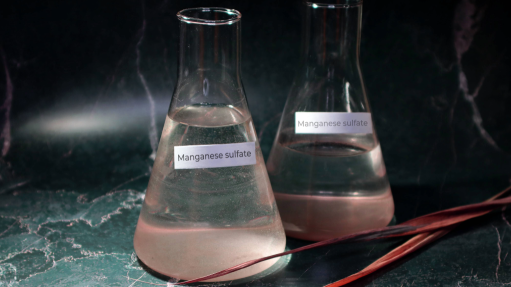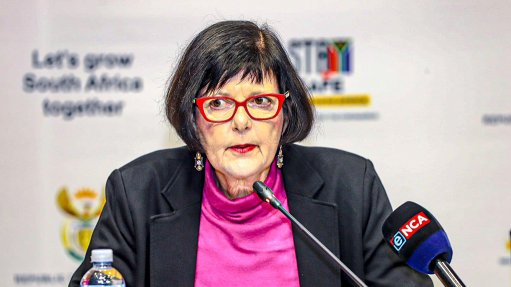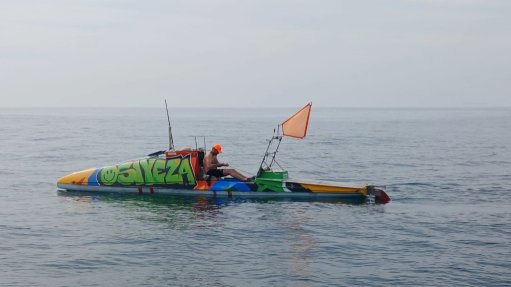Environmental organisations call on govts to halt fossil fuel investment, shift to renewables
Environmental organisations Greenpeace India and the Centre for Research on Energy and Clean Air (CREA) have called on governments to immediately halt investment in fossil fuels and shift to cleaner energy sources, such as wind and solar.
The organisations have simultaneously requested that governments strengthen emission standards and require the application of flue gas pollution control technology at power plants, smelters and other industrial sulphur dioxide (SO2) emitters.
This follows a new analysis of National Aeronautics and Space Administration (NASA) satellite data by the two organisations, which found that, in 2019, anthropogenic (human-made) SO2 emissions fell globally.
Human-made SO2 emissions also decreased in all three of the world’s top SO2 emitter countries − India, Russia and China − according to the report.
"While heartening at first glance, the drop in emissions is largely not caused by governments doing anything good in the long-term.
"In South Africa, the drop was caused primarily by load-shedding,” says Greenpeace Africa climate and energy campaigner Nhlanhla Sibisi, who adds that “coal shows us again and again that it is toxic, unreliable and costly”.
She adds that a drop in emissions needs to be accompanied by decisive action from governments across the globe.
Key findings, based on analysis of NASA satellite data include that South Africa saw a sharp decrease in SO2 emissions in 2019, bringing the country’s emissions to their lowest level on record.
However, this reduction was largely owing to rolling blackouts across the country, which led to a temporary reduction in coal-fired power generation.
Meanwhile, in 2019, India emitted 21% of global anthropogenic SO2 emissions, nearly twice that of the second-ranked global emitter, Russia.
In 2019, China’s anthropogenic SO2 emissions fell by 5%, the slowest rate of decrease in the past decade. While China was once the world’s biggest emitter of SO2, its emissions have plummeted by 87% since 2011, in large part owing to strengthened emissions standards and the use of scrubbers at power plants.
Anthropogenic SO2 emissions rose 14% in Turkey in 2019, marking the fourth consecutive year of increase. Between 2015 and 2019, Turkey’s share of coal-based electricity production increased by nearly 10%. During this period, SO2 emissions doubled.
In Mexico, anthropogenic SO2 emissions rebounded by 4% in 2019 after a rapid three-year decline. Oil and gas combustion, responsible for 90% of Mexico’s anthropogenic SO2 emissions, increased in 2019.
In 2019, a smelter site in Russia was the biggest source of anthropogenic SO2 emissions in the world. The Rabigh region, an oil and gas-based SO2 emission hotspot in Saudi Arabia, ranked second.
A coal cluster in Banten, Indonesia, was the largest SO2 hotspot in South-East Asia in 2019, followed closely by Singapore’s oil and gas refineries.
“These emissions, tracked by satellites, are affecting the health of millions of people, many who have had their lives cut short or their health compromised, showing the urgency of implementing stronger emissions regulations and transitioning to clean energy sources,” comments CREA lead analyst Lauri Myllyvirta.
She laments that, for some countries topping the list (like India, Mexico and South Africa), governments have continued to delay or weaken the implementation of emissions norms, even as the Covid-19 pandemic “should have driven home the importance of respiratory health”.
Comments
Press Office
Announcements
What's On
Subscribe to improve your user experience...
Option 1 (equivalent of R125 a month):
Receive a weekly copy of Creamer Media's Engineering News & Mining Weekly magazine
(print copy for those in South Africa and e-magazine for those outside of South Africa)
Receive daily email newsletters
Access to full search results
Access archive of magazine back copies
Access to Projects in Progress
Access to ONE Research Report of your choice in PDF format
Option 2 (equivalent of R375 a month):
All benefits from Option 1
PLUS
Access to Creamer Media's Research Channel Africa for ALL Research Reports, in PDF format, on various industrial and mining sectors
including Electricity; Water; Energy Transition; Hydrogen; Roads, Rail and Ports; Coal; Gold; Platinum; Battery Metals; etc.
Already a subscriber?
Forgotten your password?
Receive weekly copy of Creamer Media's Engineering News & Mining Weekly magazine (print copy for those in South Africa and e-magazine for those outside of South Africa)
➕
Recieve daily email newsletters
➕
Access to full search results
➕
Access archive of magazine back copies
➕
Access to Projects in Progress
➕
Access to ONE Research Report of your choice in PDF format
RESEARCH CHANNEL AFRICA
R4500 (equivalent of R375 a month)
SUBSCRIBEAll benefits from Option 1
➕
Access to Creamer Media's Research Channel Africa for ALL Research Reports on various industrial and mining sectors, in PDF format, including on:
Electricity
➕
Water
➕
Energy Transition
➕
Hydrogen
➕
Roads, Rail and Ports
➕
Coal
➕
Gold
➕
Platinum
➕
Battery Metals
➕
etc.
Receive all benefits from Option 1 or Option 2 delivered to numerous people at your company
➕
Multiple User names and Passwords for simultaneous log-ins
➕
Intranet integration access to all in your organisation


















